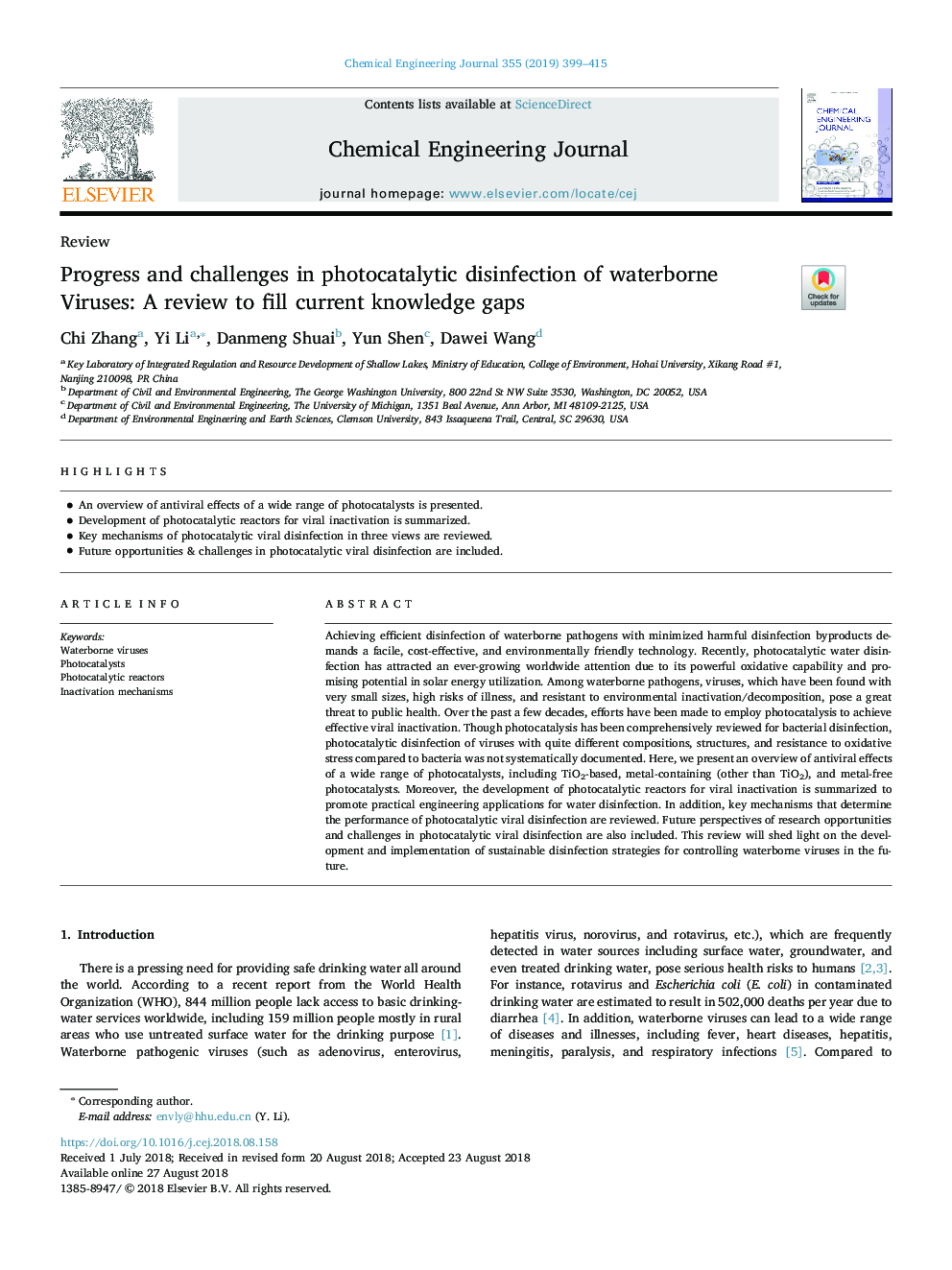| Article ID | Journal | Published Year | Pages | File Type |
|---|---|---|---|---|
| 10130837 | Chemical Engineering Journal | 2019 | 17 Pages |
Abstract
Achieving efficient disinfection of waterborne pathogens with minimized harmful disinfection byproducts demands a facile, cost-effective, and environmentally friendly technology. Recently, photocatalytic water disinfection has attracted an ever-growing worldwide attention due to its powerful oxidative capability and promising potential in solar energy utilization. Among waterborne pathogens, viruses, which have been found with very small sizes, high risks of illness, and resistant to environmental inactivation/decomposition, pose a great threat to public health. Over the past a few decades, efforts have been made to employ photocatalysis to achieve effective viral inactivation. Though photocatalysis has been comprehensively reviewed for bacterial disinfection, photocatalytic disinfection of viruses with quite different compositions, structures, and resistance to oxidative stress compared to bacteria was not systematically documented. Here, we present an overview of antiviral effects of a wide range of photocatalysts, including TiO2-based, metal-containing (other than TiO2), and metal-free photocatalysts. Moreover, the development of photocatalytic reactors for viral inactivation is summarized to promote practical engineering applications for water disinfection. In addition, key mechanisms that determine the performance of photocatalytic viral disinfection are reviewed. Future perspectives of research opportunities and challenges in photocatalytic viral disinfection are also included. This review will shed light on the development and implementation of sustainable disinfection strategies for controlling waterborne viruses in the future.
Related Topics
Physical Sciences and Engineering
Chemical Engineering
Chemical Engineering (General)
Authors
Chi Zhang, Yi Li, Danmeng Shuai, Yun Shen, Dawei Wang,
